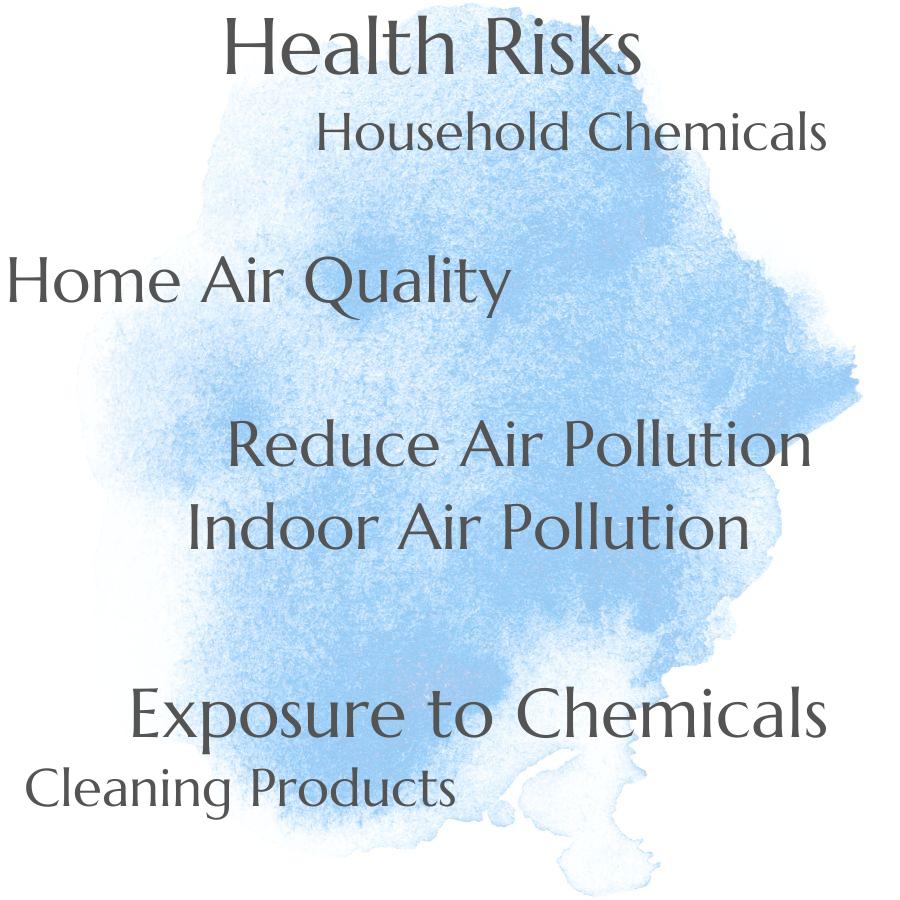Yes, cleaning products and household chemicals can have an effect on the air quality in a home.
The air quality in our homes is something that we often take for granted, but it can have a huge impact on our health and wellbeing. Unfortunately, many of the cleaning products and household chemicals we use on a daily basis can contribute to poor air quality.
In this blog post, we’ll explore how these products affect home air quality and what steps you can take to reduce their impact.
Types of Cleaning Products and Household Chemicals

These products come in a variety of forms including liquids, powders, sprays, wipes, gels, pastes and aerosols. Common cleaning products include all-purpose cleaners for general cleaning tasks; glass cleaners for windows and mirrors; bathroom cleaners for toilets and showers; kitchen cleaners for countertops and appliances; floor cleaners for hardwood floors or carpets; furniture polish to protect wood surfaces from scratches or dirt buildup; air fresheners to eliminate odors; laundry detergents to remove stains from clothing fabrics; dishwashing detergents to clean dishes in the sink or dishwasher.
Household chemicals can also include items such as bleach which is used as a disinfectant on hard surfaces like countertops or floors. All of these types of cleaning products have the potential to affect indoor air quality if not properly used according to manufacturer instructions.
Health Risks Associated With Exposure to These Chemicals
These chemicals can be found in a variety of products, such as air fresheners, detergents, disinfectants, and other cleaning supplies. When these chemicals are used in the home, they can become airborne and enter the air we breathe.
This means that people living in the home may be exposed to potentially harmful levels of these substances without even knowing it. Inhaling or coming into contact with these chemicals can cause irritation to eyes, skin, nose and throat; headaches; dizziness; nausea; asthma attacks; respiratory problems; cancer; and other long-term health issues.
It is important for people to take steps to reduce their exposure by using natural alternatives when possible or following safety instructions when using chemical-based products.
Sources of Indoor Air Pollution
It can be caused by a variety of sources, including cleaning products and household chemicals. These pollutants can come from everyday items such as aerosol sprays, paints, solvents, pesticides, and even furniture polish.
When these products are used or stored improperly they can release volatile organic compounds (VOCs) into the air which can cause health problems for those living in the home. VOCs are gases that evaporate easily at room temperature and have been linked to respiratory issues such as asthma and allergies.
In addition to VOCs, other common indoor pollutants include dust mites, mold spores, pet dander, smoke particles from cigarettes or candles, and radon gas from building materials like insulation or drywall. All of these pollutants contribute to poor indoor air quality which can lead to serious health risks if not addressed properly.
Ways to Reduce Air Pollution From Cleaning Products and Household Chemicals
These products contain volatile organic compounds (VOCs) that are released into the air when used, which can cause health problems such as headaches, nausea, and respiratory issues. To reduce air pollution from cleaning products and household chemicals, there are several steps you can take.
First, try to use natural or non-toxic cleaning products whenever possible. Natural cleaners like vinegar or baking soda don’t contain VOCs and won’t pollute your indoor air.
You should also avoid using aerosol sprays as much as possible since they release more VOCs than other types of cleaners. Second, make sure to properly ventilate your home while using any type of cleaner or chemical product by opening windows or running fans to help circulate fresh air throughout the house.
This will help disperse any VOCs that may be present in the air so they don’t accumulate indoors. Consider investing in an indoor air purifier if you frequently use strong chemical cleaners in your home.
Air purifiers can remove pollutants from the indoor environment so you don’t have to worry about them affecting your family’s health over time.
Effects On Home Air Quality
These substances contain volatile organic compounds (VOCs) which are released into the air when used. VOCs can cause a range of health problems, including headaches, nausea, dizziness, and respiratory issues.
Long-term exposure to high levels of VOCs can even lead to cancer or other serious illnesses. These chemicals may react with other pollutants in the air to create hazardous byproducts such as formaldehyde or ozone.
Poor ventilation in homes can also contribute to poor indoor air quality by trapping these pollutants inside for extended periods of time. To reduce the risk of health problems associated with poor indoor air quality, it is important to use cleaning products and household chemicals responsibly and ensure that your home is properly ventilated at all times.
Methods for Testing Home Air Quality
This process involves measuring the levels of pollutants, such as volatile organic compounds (VOCs), dust, mold spores, and other airborne particles that can be found in indoor air. Testing can be done using specialized equipment or through DIY methods such as collecting samples for laboratory analysis.
The results of these tests will help identify any potential sources of contamination and provide guidance on how to improve indoor air quality.
Read Also
- The Impact of Household Cleaning Products On Indoor Air Quality
- How Does the Use of Scented Products Affect Indoor Air Quality?
- Volatile Organic Compounds (VOCs) in Household Products and How to Reduce Exposure
- 9 Ways to Improve Indoor Air Quality During Home Renovations
- How to Reduce the Amount of Formaldehyde in Your Home’s Air